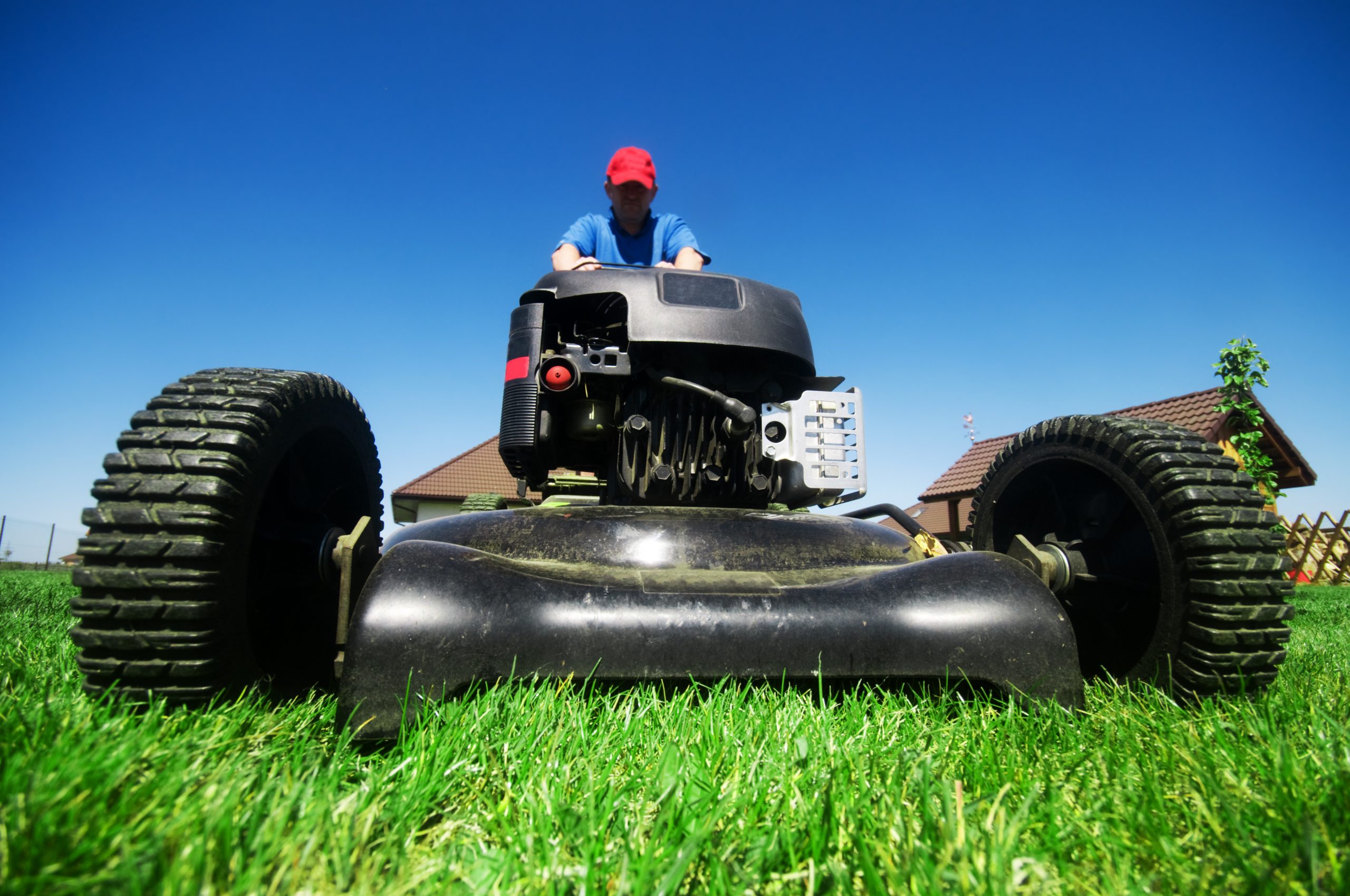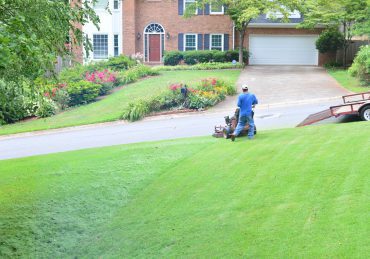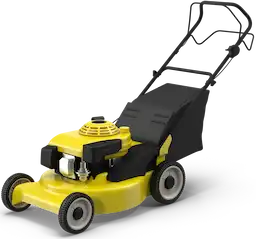A mulching lawn mower is specially designed to finely chop grass clippings and leaves, using curved, specialized blades that cut clippings multiple times. This process turns yard waste into nutrient-rich fertilizer, naturally enhancing your lawn’s health by recycling clippings back into the soil. These mowers reduce the need for external fertilizers and decrease irrigation requirements. By using a mulching mower, you’re investing in efficient lawn care that maintains soil moisture and supports robust growth. Uncover how these features benefit your lawn.
How Mulching Lawn Mowers Work (and Why It Matters)
You’ll find that mulching lawn mowers employ specialized blades with a curved design, ensuring grass is cut multiple times for ideal shredding.
The internal cutting design keeps clippings circulating within the mower deck, allowing for finer cuts before they’re redeposited onto the lawn.
Mulching plugs and kits play an essential role by sealing the discharge chute, directing clippings to remain in the deck for thorough mulching.
Mulching Blades and Internal Cutting Design
When understanding how mulching lawn mowers function, it’s essential to focus on their specialized blades and internal cutting design. A mulching mower uses curved blades designed to efficiently lift and repeatedly cut grass clippings. This process guarantees the clippings are chopped into fine particles before they’re returned to the lawn.
The internal cutting design plays an important role by generating robust airflow, which directs clippings upwards into the blades for multiple cuts. Often equipped with “all purpose” or “3-in-1” blades, these mowers offer versatility for different mowing tasks, including mulching and side discharge.
What Does Mulching Mean on a Lawn Mower?
Mulching on a lawn mower involves transforming grass clippings into a natural fertilizer by finely chopping them multiple times before returning them to the lawn.
Mulching lawn mowers achieve this by using specially designed blades with curved edges. These blades create a powerful stream of air that circulates the grass clippings, allowing them to be cut repeatedly. As a result, the clippings are reduced to smaller, more manageable pieces.
These finely cut clippings are then distributed back onto the lawn, providing essential nutrients and aiding in moisture retention. For best results, verify the grass is dry, as wet clippings tend to clump, hindering the mulching process.
These versatile mowers can also perform bagging and side-discharging functions.
The Role of Mulching Plugs and Kits
Although often overlooked, mulching plugs and kits play an essential role in transforming a standard lawn mower into a mulching powerhouse.
Mulching plugs effectively close the discharge chute, preventing grass clippings from being expelled. This allows the mower to finely chop the clippings multiple times.
Mulching kits typically include specialized blades with curved edges, designed to enhance cutting efficiency and create smaller particles. By converting many standard mowers with a mulching kit, you enable the mower to create a stream of air within the deck, lifting clippings for further cutting.
This process guarantees that grass clippings are quickly recycled back into the lawn, acting as natural fertilizer and retaining moisture, which contributes considerably to healthier soil and robust grass growth.
Why Mulching Is Good for Your Lawn
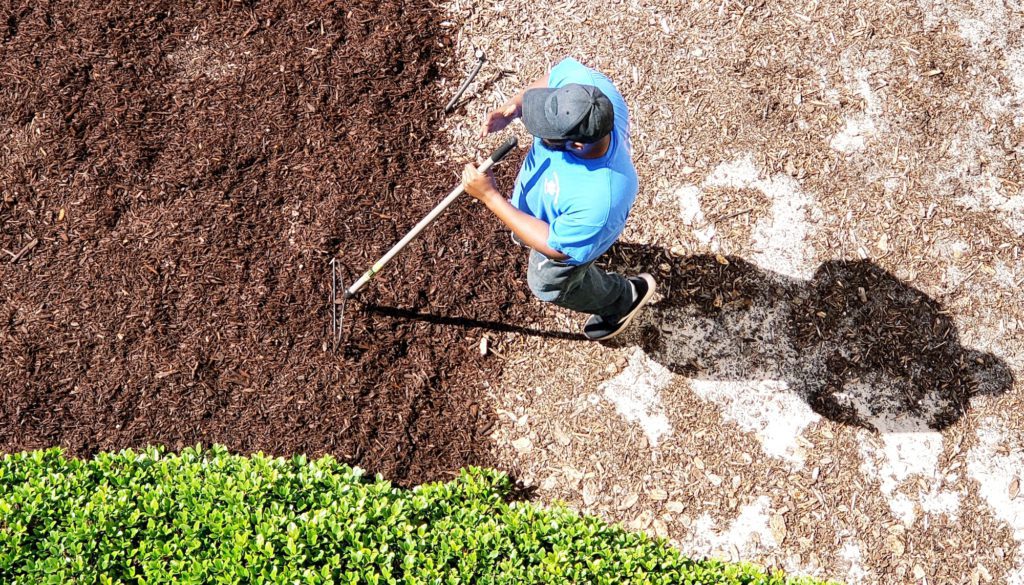
You’ll find that mulching greatly benefits your lawn by efficiently recycling nutrients and enhancing soil health, as finely chopped grass clippings decompose and enrich the soil with essential minerals.
This process not only cuts down on the time you spend watering, thanks to improved soil moisture retention, but also reduces your yard waste by eliminating the need for bagging grass clippings.
Nutrient Recycling and Soil Health
When you choose a mulching lawn mower, you’re embracing a method that markedly enhances nutrient recycling and soil health.
Mulching mowers finely chop grass clippings, allowing them to decompose rapidly and release essential nutrients back into the soil. This natural process can satisfy up to 25% of your lawn’s fertilizer needs, reducing dependency on artificial fertilizers.
By recycling grass clippings, you not only sustain soil health but also encourage the activity of beneficial microorganisms and earthworms, which improve soil structure and nutrient availability.
The finely mulched clippings act as a natural mulch, retaining moisture and keeping soil temperatures cooler. This practice supports a robust lawn ecosystem, promoting lush, green grass while minimizing environmental impact and waste.
Time and Water Savings
While optimizing your lawn care routine, mulching lawn mowers offer a significant advantage by conserving both time and water.
By finely chopping grass clippings and returning them to the soil, mulching mowers help retain moisture, cutting down water usage by up to 25% during dry spells. This natural process reduces the frequency of watering, allowing you to save time and energy typically spent on regular irrigation.
Furthermore, the protective layer of clippings maintains cooler soil temperatures, reducing evaporation and fostering robust grass growth.
Over time, this practice decreases reliance on artificial fertilizers, as natural nutrient recycling occurs. By encouraging deep root systems and enhancing drought resistance, mulching mowers contribute to a more sustainable and efficient lawn care routine.
Reduced Yard Waste
Though traditional lawn care methods often result in significant yard waste, adopting a mulching lawn mower can dramatically reduce this environmental footprint.
By efficiently recycling grass clippings back into the soil, mulching mowers minimize the need for disposal and decrease landfill contributions. This process, known as grasscycling, not only conserves resources but also enhances soil health by maintaining organic matter and moisture levels, protecting against erosion.
The decomposed grass clippings act as a natural fertilizer, supplying approximately 25% of your lawn’s nutrient requirements, thereby reducing reliance on artificial fertilizers.
Furthermore, mulching eliminates the need to collect and dispose of clippings, streamlining your lawn care routine and promoting a more sustainable, eco-friendly approach to maintaining a vibrant yard.
When and How to Use a Mulching Mower
To effectively use a mulching mower, start by mowing when the grass is dry, as this prevents clumping and guarantees even distribution of clippings.
Pay attention to potential challenges like wet grass, thatch buildup, and overly tall lawns, which can hinder the mulching process.
For best results, regularly sharpen the blade, adjust the mowing height according to the season and grass type, and maintain your mower to keep it in top condition.
Ideal Conditions for Mulching
For ideal mulching, it’s crucial to understand the conditions that maximize the efficiency of your mulching mower.
Mulching lawnmowers work best when the grass is dry and not overly tall. Aim to maintain a height that allows you to remove no more than one-third of the grass blade during mowing. This guarantees that grass clippings are small enough to decompose quickly, enriching the soil.
Regular mowing, at least once a week during peak growth seasons, prevents clumping and promotes a healthier lawn. Equip your mower with sharp, curved blades for finer cuts.
Adjust the mowing height based on your grass type and seasonal growth patterns to optimize mulching. This approach enhances nutrient recycling and supports a robust lawn ecosystem.
Common Challenges (Wet Grass, Thatch, Tall Lawns)
When using a mulching mower, encountering common challenges like wet grass, thatch, and tall lawns can affect its performance. To guarantee effective mulching, consider these strategies:
- Wet Grass: Avoid mowing when grass is damp, as wet grass can clump and hinder the mower’s ability to finely chop clippings. Wait until the lawn is dry for best results.
- Thatch: Understand that mulching doesn’t contribute to thatch buildup. Instead, maintain regular mowing, irrigation, and fertilization practices to support decomposition and prevent excessive thatch.
- Tall Lawns: For overgrown lawns, don’t cut more than one-third of the grass blade at once. Gradually reduce the height over several sessions to minimize stress on the lawn and guarantee a healthy regrowth cycle.
Best Practices for Smooth Results
Although mulching mowers are powerful tools for lawn care, their effectiveness hinges on adhering to certain best practices.
First, always mow when the grass is dry to prevent clumping and guarantee the even distribution of grass clippings. This guarantees your mulching lawn mower works efficiently, returning finely chopped clippings that nourish your lawn.
Adhere to the one-third rule, removing no more than one-third of grass blade height per mow, to promote lush growth and avoid stressing the lawn. Adjust the mowing height according to grass type and seasonal changes for ideal results.
Keep the mulching blade sharp for clean cuts, enhancing the mulching process and speeding up the decomposition of clippings. Regular weekly mowing during peak growth seasons maximizes these benefits.
Mulching Mowers vs. Regular Mowers
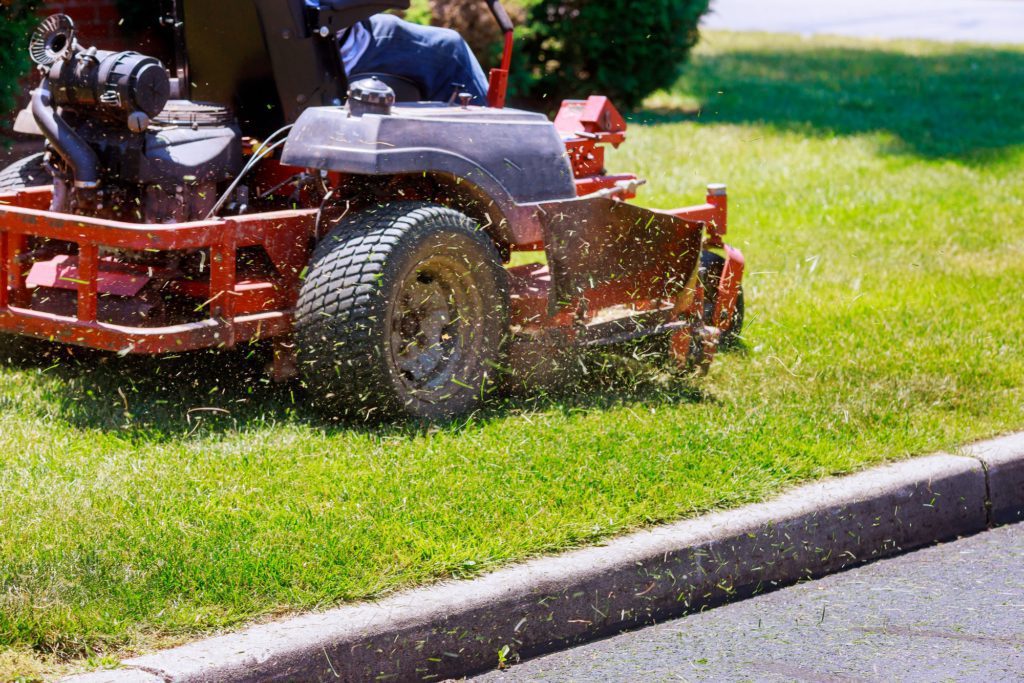
When comparing mulching mowers to regular mowers, you’ll notice significant differences in performance, cost, and convenience.
Mulching mowers offer superior lawn health benefits by recycling clippings, reducing the need for additional fertilization and irrigation, while also saving you time by eliminating frequent bag emptying.
Furthermore, their ability to effectively mulch leaves during autumn provides an added advantage, turning seasonal yard maintenance into a nutrient-rich process for your lawn.
Performance, Cost, and Convenience
With a focus on lawn care efficiency, mulching mowers outperform regular mowers by enhancing both performance and convenience. Their design chops grass into fine particles, promoting quick decomposition and natural fertilization. This avoids the hassle of bagging and disposal, which regular mowers require, and also prevents the risk of thatch buildup.
Here’s why mulching mowers are a smart choice:
- Performance: The curved blades guarantee multiple cuts, leaving smaller, aesthetically pleasing clippings that enrich your lawn.
- Cost: Although the initial investment is higher, you save on fertilizers and reduce waste, leading to long-term financial benefits.
- Convenience: Continuous mowing without frequent bag emptying means you’ll spend less time on lawn maintenance, optimizing your efforts.
Leaf Mulching: An Autumn Advantage
As autumn leaves blanket your lawn, mulching mowers provide a strategic advantage by efficiently transforming them into beneficial mulch.
By employing a mulching mower, you chop fallen leaves into fine pieces, allowing them to decompose quickly. This process enriches the soil with essential nutrients, unlike regular mowers that collect debris for disposal.
Mulching mowers handle various leaf types and sizes effectively, avoiding clogs and ensuring continuous operation. This saves time during your busy autumn cleanup, whereas regular mowers often require frequent stops to empty bags.
Furthermore, leaf mulching reduces landfill waste and acts as a natural mulch, conserving soil moisture and suppressing weed growth. The finely shredded particles also improve soil aeration, promoting healthier grass growth.
Get Professional Lawn Mulching Help with LawnGuru—No Contracts, Just Results
Struggling with yard waste or patchy growth? Don’t let missed clippings or poor mowing practices hold your lawn back.
LawnGuru makes it easy to connect with local pros who know exactly how to mulch, mow, and maintain your lawn for peak performance. Whether you need a one-time service or ongoing care, we’ve got the tools and expertise to do it right.
No contracts. No hassle. Just reliable service and healthier grass, fast.
Get your free quote today and see how much better your lawn can look with the right mulching care.

